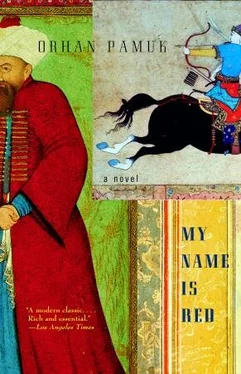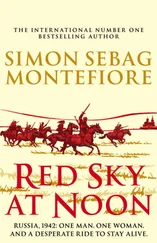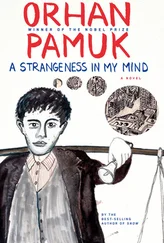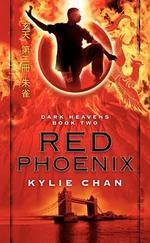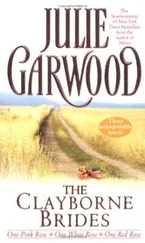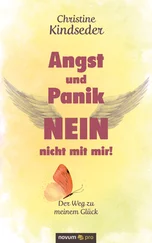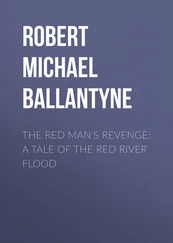In the middle of the night I lost myself in dreams of marriage: I had no doubts about my love or that it was reciprocated-we were married in a state of great contentment-but, my imaginary happiness, set in a house with a staircase, was dashed when I couldn’t find appropriate work and began arguing with my wife, unable to make her heed my words.
I knew I’d appropriated these ominous images from the section on the ills of marriage in Gazzali’s The Revival of Religious Science , which I’d read during my nights as a bachelor in Arabia; at the same time, I recalled that there was actually advice on the benefits of marriage in that same section, though now I could remember only two of these benefits: first, having my household kept in order (there was no such order in my imagined house); second, being spared the guilt of self-abuse and of dragging myself-an even deeper sense of guilt-behind pimps leading me through dark alleyways to the lairs of prostitutes.
The thought of salvation at this late hour brought masturbation to mind. With a simple-minded desire, and to rid my mind of this irrepressible urge, I retired to a corner of the room, as was my wont, but after a while I realized I couldn’t jack off-proof well enough that I’d fallen in love again after twelve years!
This struck such excitement and fear into my heart that I walked around the room nearly atremble like the flame of the candle. If Shekure meant to present herself at the window, then why this letter, which put the opposite belief into play? Why did her father call for me? As I paced, I sensed that the door, wall and squeaky floor, stuttering as I myself did, were trying to creak their responses to my every question.
I looked at the picture I’d made years ago, which depicted Shirin stricken with love upon gazing at Hüsrev’s image hanging from a branch. It didn’t embarrass me as it would each time it came to mind in subsequent years, nor did it bring back my happy childhood memories. Toward morning, my mind had mastered the situation: By returning the picture, Shekure had made a move in an amatory chess game she was masterfully luring me into. I sat in the candlelight and wrote her a letter of response.
In the morning, after sleeping for a spell, I went out and walked a long way through the streets, carrying the letter upon my breast and my light pen-and-ink holder, as was my custom, in my sash. The snow widened Istanbul ’s narrow streets and freed the city of its crowds. All was quieter and slower, as it’d been in my childhood. Crows seemed to have beset Istanbul ’s roofs, domes and gardens just as they had on the snowy winter days of my youth. I walked swiftly, listening to my steps in the snow and watching the fog of my breath. I grew excited, expecting the palace workshop that my Enishte wanted me to visit to be as silent as the streets. Before I entered the Jewish quarter, I sent word by way of a little street urchin to Esther, who’d be able to deliver my letter to Shekure, telling her where to meet me before the noontime prayers.
I arrived early at the royal artisans’ workshop located behind the Hagia Sophia. Except for the icicles hanging from the eaves, there was no change in the building where I’d often visited my Enishte and for a time worked as a child apprentice.
Following a handsome young apprentice, I walked past elderly master binders dazed from the smell of glue and bookbinder’s paste, master miniaturists whose backs had hunched at an early age and youths who mixed paints without even looking into the bowls perched on their knees, so sorrowfully were they absorbed by the flames of the stove. In a corner, I saw an old man meticulously painting an ostrich egg on his lap, another elder enthusiastically embellishing a drawer and a young apprentice graciously watching them both. Through an open door, I witnessed young students being reprimanded as they leaned forward, their noses almost touching the pages spread before their reddened faces, as they tried to understand the mistakes they’d made. In another room, a mournful and melancholy apprentice, having forgotten momentarily about colors, papers and painting, stared into the street I’d just now eagerly walked down.
We climbed the icy staircase. We walked through the portico, which wrapped around the inner second floor of the building. Below, in the inner courtyard covered with snow, two young students, obviously trembling from the cold despite their thick capes of coarse wool, were waiting-perhaps for an imminent beating. I recalled my early youth and the beatings given to students who were lazy or who wasted expensive paints, and the blows of the bastinado, which landed on the soles of their feet until they bled.
We entered a warm room. I saw two novices who’d recently finished their apprenticeships. Since the great masters, whom Master Osman had given workshop names, now worked at home, this room, which once aroused excessive reverence and delight in me, no longer seemed like the workshop of a great and wealthy sultan but merely a largish room in some secluded caravansary in the remote mountains of the East.
Immediately off to the side, before a long counter, I saw the Head Illuminator, Master Osman, for the first time in fifteen years; he seemed like an apparition. Whenever I contemplated illustrating and painting during my travels, the great master would appear in my mind’s eye as if he were Bihzad himself; now, in his white outfit and in the snow-white light falling through the window facing the Hagia Sophia, he looked as though he’d long become one of the spirits of the Otherworld. I kissed his hand, which I noticed was mottled, and I introduced myself. I explained how my Enishte had enrolled me here as a youth, but that I’d preferred a bureaucratic post and left. I recounted my years on the road, my time spent in Eastern cities in the service of pashas as a clerk or treasurer’s secretary. I told him how, working with Serhat Pasha and others, I’d met calligraphers and illuminators in Tabriz and produced books; how I’d spent time in Baghdad and Aleppo, in Van and Tiflis, and how I’d seen many battles.
“Ah, Tiflis!” the great master said, as he gazed at the light from the snow-covered garden filtering through the oilskin covering the window. “Is it snowing there now?”
His demeanor befitted those old Persian masters who grew blind perfecting their artistry; who, after a certain age, lived half-saintly, half-senile lives, and about whom endless legends were told. I straightaway saw in his jinnlike eyes that he despised my Enishte vehemently and that he was furthermore suspicious of me. Even so, I explained how in the Arabian deserts snow didn’t simply fall to the Earth, as it was now falling onto the Hagia Sophia, but onto memories as well. I spun a yarn: When it snowed on the fortress of Tiflis, the washerwomen sang songs the color of flowers and children hid ice cream under their pillows for summer.
“Do tell me what those illuminators and painters illustrate in the countries you’ve visited,” he said. “What do they depict?”
A dreamy-eyed young painter who was ruling out pages in the corner, lost in revery, raised his head from his folding work desk along with the others in the room and gave me a look that said, “Let this be your most honest answer.” Many of these craftsmen didn’t know the corner grocer in their own neighborhood, or how much an oke’s worth of bread cost, but they were very curious about the latest gossip East of Persia, where armies clashed, princes strangled one another and plundered cities before burning them to the ground, where war and peace were contested each day, where the best verses were written and the best illustrations and paintings were made for centuries.
“Shah Tahmasp reigned for fifty-two years. In the last years of his life, as you know, he abandoned his love of books, illustrating and painting, turned his back on poets, illustrators and calligraphers, and resigning himself to worship, passed away, whereupon his son, Ismail, ascended to the throne,” I said. “Shah Tahmasp had been well aware of his son’s disagreeable and antagonistic nature, so he kept him, the shah-to-be, behind locked doors for twenty years. As soon as Ismail assumed the throne, in a mad frenzy, he had his younger brothers strangled-some of whom he’d blinded beforehand. In the end, however, Ismail’s enemies succeeded in plying him with opium and poisoning him, and after being liberated from his worldly presence, they placed his half-witted older brother Muhammad Khodabandeh on the throne. During his reign, all the princes, brothers, provincial governors and Uzbeks, in short everyone, started to revolt. They went after each other and our Serhat Pasha with such martial ferocity that all of Persia turned to smoke and dust and was left in disarray. Indeed, the present shah, bereft of money and intelligence and half-blind, is not fit to sponsor the writing and illustration of illuminated manuscripts. Thus, these legendary illustrators of Kazvin and Herat, all these elderly masters, along with their apprentices, these artisans who made masterpieces in Shah Tahmasp’s workshops, painters and colorists whose brushes made horses gallop at full speed and whose butterflies fluttered off the page, all of these master binders and calligraphers, every last one was left without work, penniless and destitute, homeless and bereft. Some migrated to the North among the Uzbeks, some West to India. Others took up different types of work, wasting themselves and their honor, and still others entered the service of insignificant princes and provincial governors, all sworn enemies of each other, to begin working on palm-size books containing at most a few leaves of illustration. Rapidly transcribed, hastily painted, cheap books appeared everywhere, matching the tastes of common soldiers, boorish pashas and spoiled princes.”
Читать дальше
